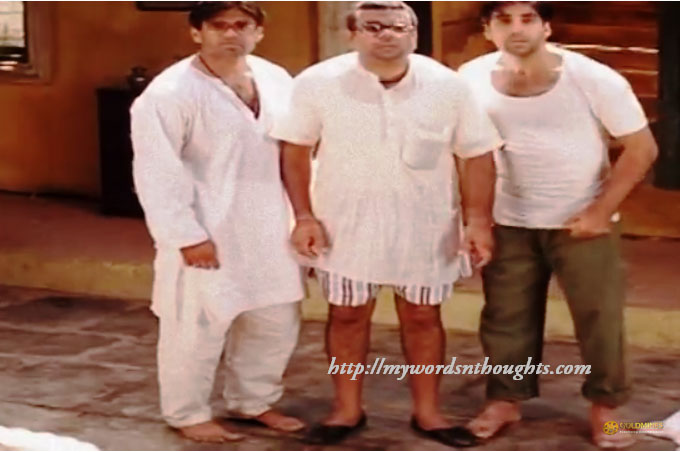Do you know what existed there before the construction of these buildings of Thrissur town?
When you travel backward to the yesterdays of a particular city or town, you may loss the visuals of many sights you see today. When you reach a particular site, and try to find what existed there before, you may get some strange answers, and a few of them may be just unbelievable. If not tried to find answers to such questions, we might believe that a particular building or monument might have remained so, at least for a few centuries. Through this column, I would love to take you people for a silent ride, though not in a time machine to the ancient times of Thrissur, give you a sketch of Thrissur main town then, some glimpses of those glorious yesterdays, a few thoughts pondered on the buildings existed then and tell you many old stories which just resemble a folklore or fantasy, hard to believe.
Can you ever believe that the site where KSRTC stand of Thrissur stands now was once a palace? Hard to believe! Right? Yes, there was one palace with king, his court and king’s rule, as used to be in the ancient times. Can we even compare the well-disciplined palace of yesterdays with obedient servants and subjects with the hash bush social life and disorder and noise we experience today in the same location, though there is a vast difference of time? Do you know Poothole and Shaktan Stand were once paddy fields! Let me give some interesting stories of many sites of Thrissur, which have completely erased memories of yesterdays, and have constructed a new world of its own. Who knows, what’s going to happen in future! And how long they are to stay here!

An old photo of Thrissur KSRTC Bus Stand
It’s not easy or practicable to travel towards future carrying along with us, everything that binds with past. It’s not possible to preserve every memory of yesterdays or lock its flavours while travelling forward. We have to leave many things behind. But isn’t it our duty to at least record old things, before putting basement of new sights and ideas and construct a new culture, entirely strange to the old one? Though it’s not possible to find all those old things, let me present before you, at least a few things of yesterdays of Thrissur main town. Hope you will like it.
The city which was once surrounded by forts
There were many forts surrounding the heart of Thrissur city in the ancient days. As per historians, Kizhakke Kotta (East Fort) and Padinjare Kotta (West Fort) are some of the remaining links of those old forts. Though historians never claim for the presence of huge and strong forts then, they have arrived at certain conclusions which indeed point to the fact that forts were once part of Thrissur, during its glorious yesterdays. It might be quite strange, but the evidence for the existence of such forts was first obtained from England, not India. British had conducted a survey in the year 1816, which have recorded many things, which look very strange in accordance to the present scenario. Historians also got a sketch of that period. That’s how they came to understand that Thrissur was equipped with forts then.
The Missing Divan Peshkar Board
A Divan Peshkar Board was present in front of Taluk office till 4 or 5 years ago, but the board has disappeared now. The place was once Collectorate, which was built by Dutch in 1856.
Aramana Bar Divan Building
The place where Aramana Bar is situated was once the palace of Divan. That’s the reason why the place got the name, Divanji Moola (Divan’s Corner). Divan Shankara Warrier resided in this palace then. The place where KSRTC stand stands now is just one among the numerous palace of the king then.
There is one memorial at Kurupam Road which brings back the memories of some historic moments of British India in the early 20th century. In 1911 a meeting was arranged in this place by local kings and British, following the shift the India’s capital from Kolkata (then Calcutta) to Delhi by British. Local kings were called to the place by British rulers and this memorial is just a window to look into those days, when Indian rulers were fully dominated by British.
Thrissur Railway station building was built during the reign of Kochi Raja in the year 1902. A rest room was also constructed then for Raja. But now, this room is not properly maintained.

Thrissur Railway Station Now
Military camp at Ramanilayam
Ramanilayam was once a military camp. During the World War 1st, recruitment was conducted in the camp, and a board is placed here, to know about that historic event. This building was once Divan’s court too, but it’s not identified to which Divan this palace belongs too. Built during the British Raj in the 1880s, this historic building has witnessed many major events in the political history of Kerala.
Warehouses (Kidang) of Punkunnam
Old people say that several warehouses have been built in different parts of the ancient city as a part of king’s rule and the presence of forts at different major centres. They existed till 1960s or 1970s though partially, but have been destroyed completely now. There were numerous warehouses fixed around Shaktan Palace.
Ancestral homes which have disappeared completely
Many places where big constructions stand now have been constructed destroying big ancestral homes (tharavadu) of many families yesterdays. Kaustubham Auditorium of Thiruvambadi is the best instance.
Paddy fields which once told the strong agricultural background of the city
Paddy fields form an integral part of social life, and the culture of people of a particular generation. It also implies how man was bound to nature and its green once. But many paddy fields with filled rice and banana have now paved way to big constructions, commercials and apartments, in the outskirts of Thrissur city. It’s sad to know that Thrissur city has lost almost 80% of its paddy fields. Poothole and Shaktan Stand were once paddy fields. Poonkunnam, Kuttankulangara and Kottapuram Railway Gate were also paddy fields once.
To know more about Thrissur

Oldest available map of Thrissur
To know about glorious yesterdays of Thrissur, we need some authenticated records. And the mission is not complete, just by recording the buildings/fields stood in a particular place before it was demolished to give a new structure. We should also get into know about the history of Thrissur, significance of each place and building and get into conclusions. Then only it will be a complete research work.
As a part of the development of the city, we have left behind many traditions of past. Most sadly, more than half of the memories of the cultural capital have been demolished partially or completely. In most cases, demolitions have been conducted without proper documentation of the significance of the building in Kerala’s history or culture, so sad to know. This procedure is even continued today. Even if it’s not practicable to carry everything to future, is it not out duty to keep a record of old things for our future generations. Who knows, what’s to happen in future, or the comeback of many old things though least expected! And who can forecast future!
You can read a few more articles on Thrissur – The Cultural Capital of Kerala. Click on the images in the gallery to read


























Recent Comments